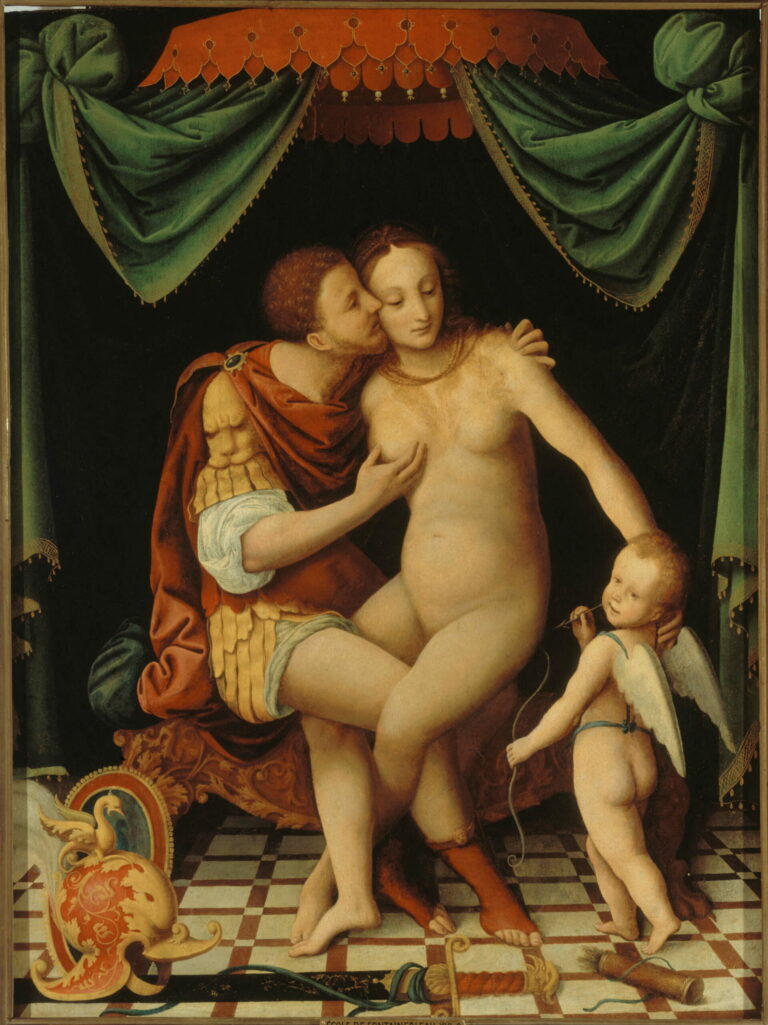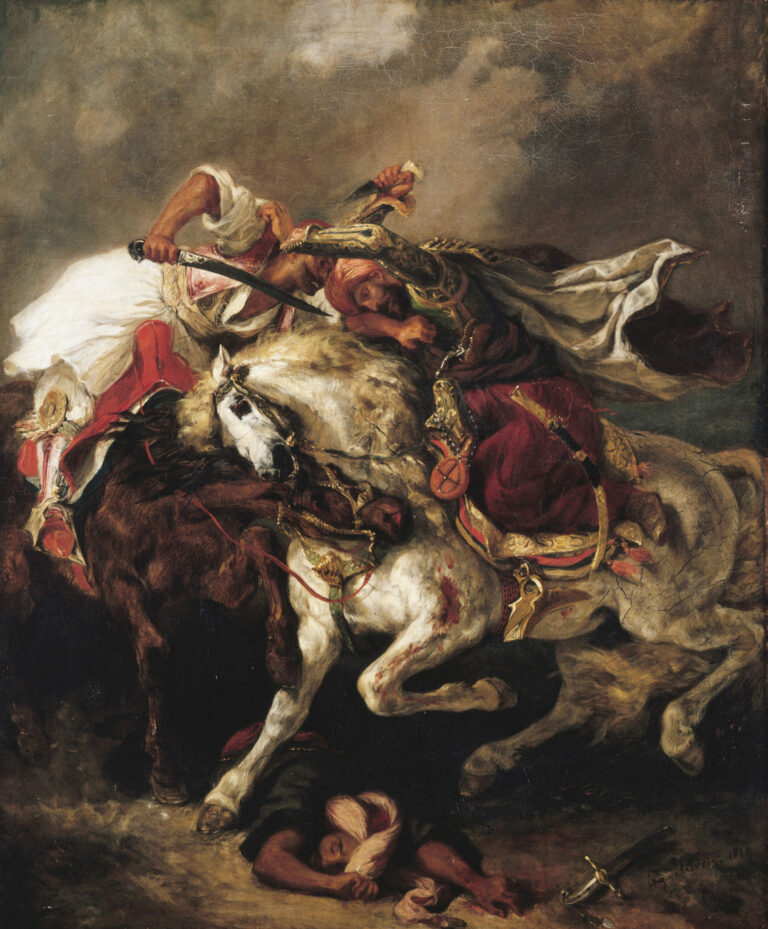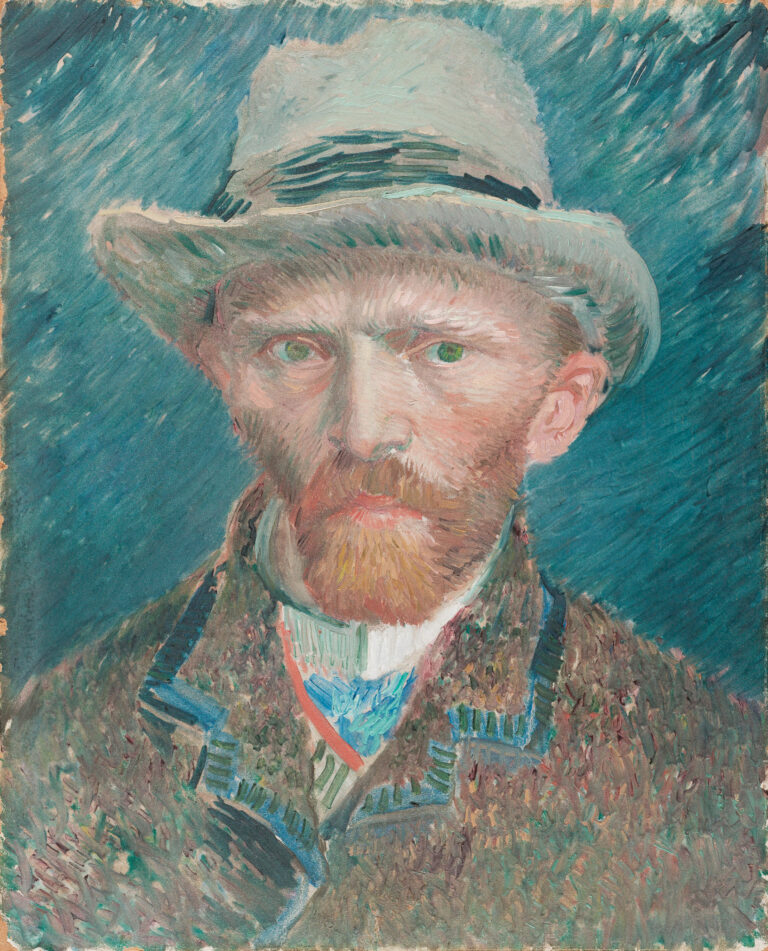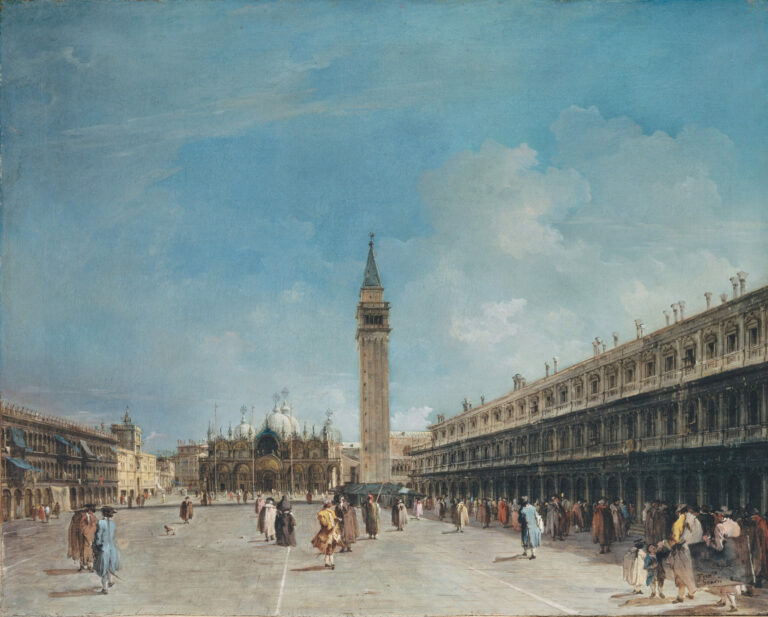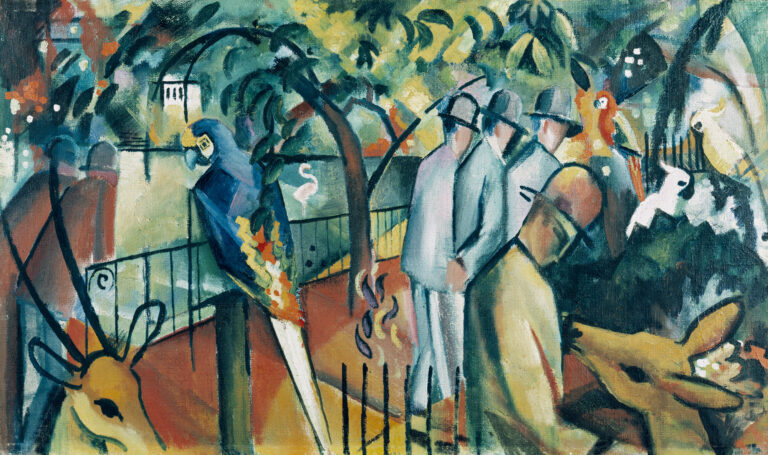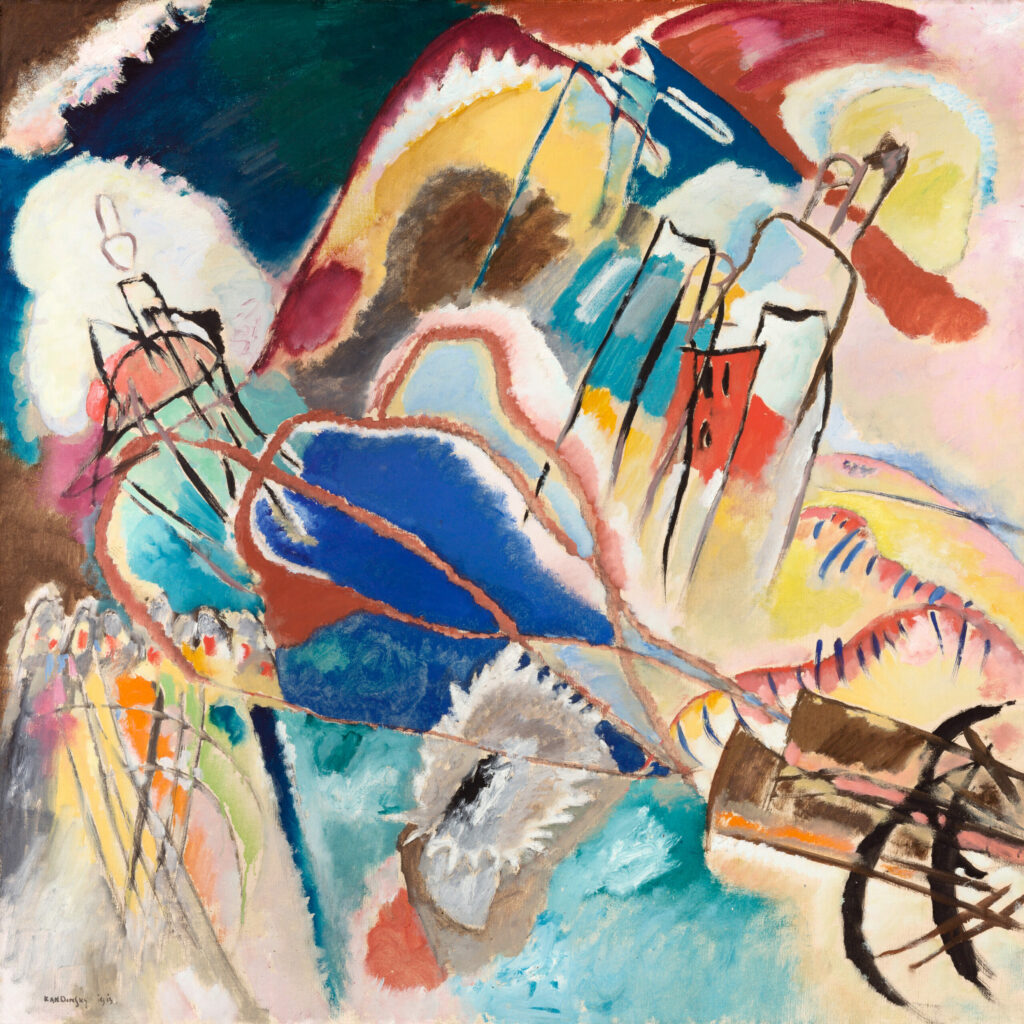
Revolutionary Abstraction in Visual Music. In this groundbreaking work, Kandinsky propels us to the frontiers of abstraction with revolutionary boldness.
The canvas vibrates as fragmented forms and pure colors collide in a disorienting visual symphony. Black lines, resembling musical notation, structure a vibrating space where intense chromatic masses burst forth—deep blues, incandescent reds, luminous yellows.
Though appearing chaotic at first glance, the composition reveals a subtle orchestration of tensions. Dynamic contrasts between dense zones and airy spaces create a pulsating rhythm reminiscent of an internal battle. Kandinsky transcends mere representation to reach a spiritual dimension where color, liberated from its descriptive function, becomes an autonomous language capable of expressing the ineffable.
Additional Information
- Title: Improvisation No. 30 (Cannons)
- Artist: Vassily Kandinsky
- Date: 1913
- Dimensions: 111 x 111.3 cm (43 11/16 x 43 13/16 in.)
- Location: The Art Institute of Chicago, Modern Art, Gallery 392
- https://www.artic.edu/artworks/8991/improvisation-no-30-cannons
Vasily Kandinsky (1866-1944) was a pioneer of abstraction and a major figure in the early 20th-century avant-garde who radically transformed the history of modern art. Originally trained as a Russian lawyer, he abandoned his career relatively late to devote himself to painting after an aesthetic revelation while viewing a Monet haystack painting. As much a visionary theorist as an artist, he developed a synesthetic conception of art where colors and forms resonated like musical notes.
After World War I, as a professor at the Bauhaus, he developed a rigorous pictorial grammar while pursuing his mystical quest for pure art. “Improvisation No. 30” marks the pinnacle of his expressionist period in Munich, just before the cataclysm of the Great War scattered the Blue Rider group he had co-founded with Franz Marc, reflecting the early signs of a world undergoing dramatic transformation.

